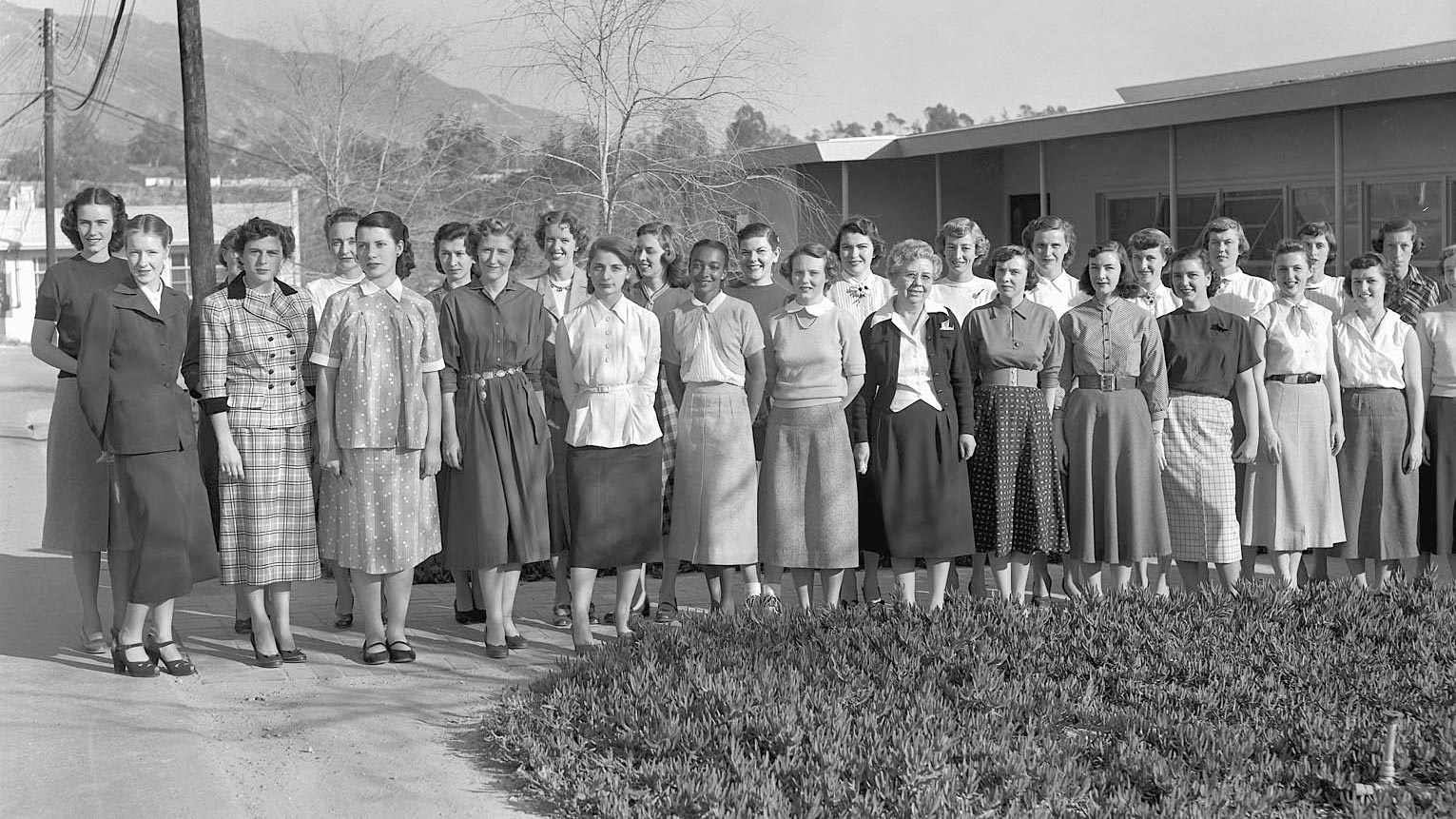Programming is not a man's profession
Or how stereotypes about women created a “male bias” in the IT industry.

Probably, many of those who now work in the IT field have somehow encountered the history of programming. Then, of course, you will know the name of the first programmer – Ada Lovelace. Perhaps, if in the 17th-19th centuries, education for women in the field of natural sciences had been more accessible, then this would not have been the only name. It's strange that we call the 18th century. the era of Enlightenment, but the enlightenment did not reach women because they were denied the right to receive higher and professional education.
In this article I want to talk about the existing “male bias” in this industry, why it exists and why it is so difficult for women to break into this field.
DISCLAIMER: The main message of the article is a call for change, so that we begin to notice the problems of women and women themselves. And not that supposedly all men are bad; Of course, not everyone, just like not all women are good or bad. The more men and women learn about the problem, the more people will pay attention to it and, perhaps, even begin to change something, at least in their environment.
According to estimates for 2022, report Stack OverFlow shows that there are many more men than women in this field. I decided to use this survey as an example, because all programmers and programmers use this site.

So, let's start from afar.
Childhood and school
One of the computer science teachers, speaking at advanced training courses at Carnegie Mellon University, exclaimed:
“Where are the girls who love programming? There are any number of boys in my class who are obsessed with computers. I wish I could meet a girl like that.”
This teacher probably hasn't heard of research, conducted by Jane Margolis at the same university in the Department of Computer Science in the 1990s. The professor was able to find out that families were more willing to buy computers for boys than for girls, even if the latter were very interested in computers. Perhaps there were few of them simply due to the lack of a computer?
But let's return to the question above, from this teacher. My guess is this:
Girls have been told that they are not smart enough and therefore they doubt themselves so much that they do not want to start studying something in the field of natural sciences, and subsequently programming.
If you analyze school textbooks, you will notice that they talk much more often about male scientists and quite rarely about women (although there are also plenty of female scientists). Which can give girls the impression that they are simply not capable of learning something as complex as programming. Recent study, which was carried out in the USA among 5-year-old children, proved this theory. Girls, like boys, at the age of 5 believe that women can be “very, very smart.” But after children start attending school, something changes in girls and they begin to doubt the mental abilities of their gender. If five-year-old girls are asked to play a game for “very, very smart children,” they readily agree, while six-year-old girls do not.
Is there a solution to this problem? Yes! It is enough to add female scientists to school textbooks. As shown study it really works. After all, if books contain more images of female scientists, schoolgirls do better in science. Analysis history textbooks in the USA, educational benefits on language (used in Germany, USA, Spain, Australia), courses on political science indicates that the average number of mentions or photographs of women relative to men in these textbooks ranges from 5.3% to 10.8%. A similar indicator was observed in the analysis of Russian, Armenian, Pakistani and South African textbooks.
Also, do not forget that girls should not behave like boys. Why is the behavior of boys, if they are interested, considered “indicative”, “standard”, “normal”? Just because girls love programming too doesn't mean they'll be as good as boys. You should not expect “boyish” behavior from them.
Doing one thing like an obsessive person and staying up all night is not so much a sign of love for this activity as a sign of some limitation and, perhaps, immaturity. I even sometimes compare such hyperfixation with the feeling of falling in love – when all thoughts are occupied by one person, but this is not healthy. After all, when you begin a normal relationship, feelings and hormones return to normal and your life begins to consist not only of this person. And it’s exactly the same here. In addition to one interest, there may be others.
University and path in science
Most girls who choose to go to university to study a technical specialty know that they will be subject to prejudice, and there will be a stream of stereotypes that “this is not a women’s department,” that she won’t cope, that her brain works differently ( Although proven, that this is not so) and therefore it has no place here. Even if not everyone says this openly, many hint in every possible way. I’m not sure if there are articles that talk about the aggressive attitude of men towards women in engineering departments, but there are similar about sports grounds. Men were often hostile and aggressive towards women who came to exercise on common sports grounds that were not divided into women's and men's.
Such stereotypes deliberately create an incorrect perception of women by men and their mental abilities. Study, conducted in 2016, found that female students assess their knowledge more objectively than male students. Also, in addition to their knowledge, female students also more objectively assessed the performance of their peers and peers. Boys, on the other hand, persistently believed that members of their sex were more capable than girls, even though the latter's academic performance was higher. Such bias not only leads to the fact that students misperceive their fellow students, but also teachers often have a biased attitude towards them. From a personal example: there was a case when a teacher was surprised that it was the first time he saw so many girls in the physics department (there were 5 girls in a group of 11 people).
But where, if not at the university, should meritocracy flourish, it would seem?
Meritocracy (lit. “power of the worthy”, from Latin meritus “worthy” + other Greek κράτος “power, rule”) – the principle of management, according to which the highest (main) leadership positions should be occupied by the most capable people, regardless of their social origin.
I would prefer to call it the “myth of meritocracy,” as author Caroline Criado Perez does in her book Invisible Women. And all because of one survey that proved this myth. Respondents were asked to rate the credibility of two studies: a fictional one and a real one. A real study pointed to the presence of a “male bias” in the scientific and research environment, and a second fictional study proved the opposite. Men (primarily STEM professionals) rated the results of the second study as credible, but the results of the first, current study, as unscientific.
STEM (English: science, technology, engineering and mathematics – natural sciences, technology, engineering and mathematics).
There are also a number research, where scientific articles underwent double-blind peer review (the author does not know who is reviewing his article, just as the reviewer does not know whose work he is reviewing). The results were as follows: articles written by women were rated higher and published more often. Which once again dispels the myth of male intellectual superiority.
Then why does such a bias exist if women’s intellectual abilities are no worse than men’s?
To summarize: we have a male bias in technical specialties, because many girls believe in stereotypes that they are not capable of studying it all. And their belief in these stereotypes is reinforced by the myth of meritocracy. As a result, so few girls now work in IT, precisely those who dreamed of it from the very beginning and strived to get there.
Job
Girls are treated more prejudiced when they are hired for paid work
By using the word “paid” I also wanted to emphasize that on average, women all over the world perform 75% of all unpaid domestic work. Every day women spend from 3 to 6 hours on it, while men spend an average of half an hour up to two hours. You can also read about Icelandic “long friday” :). Some might say that women do this because they work less and earn less. Not at all, as shown research Over the past 20 years, women's doing most of the housework is independent of how much money they contribute to the overall budget. But despite all this, women can still boast of various career achievements.
This fact is confirmed by one phenomenon that showed itself in the 1970-1980s, in the New York Philharmonic Orchestra. Suddenly, in early 1970, the number of women in the orchestra went from 0% to 10%. And the reason for it all was the introduction of blind auditions. During such auditions, employers are separated from the performers by a screen. Thus, by the end of the 1980s. the proportion of women in the orchestra has moved closer to 50%. Today the share of female performers is about 45%.
To date, research show that the more an employer believes they are unbiased or that they are not sexist, it makes them outright sexist. Those men (and women) who truly believe in their objectivity when choosing between two candidates with virtually identical resumes—one a man and the other a woman—usually choose the man.
Perhaps one of the reasons for such a low number of women in IT is related to this.
Women are treated more strictly than men
But let's say that you do get hired in the STEM field. But not everything is so sweet here either. Analysis A study of staff performance in American high-tech companies showed that women are criticized for behavior that is considered normal for men. Women are advised to behave less aggressively, while when they mention “aggressiveness” in reviews of men, they are advised, on the contrary, to “behave more aggressively.”
It’s not for nothing that more than 40% of women quit from the IT sector 10 years after starting work (for men this figure is 17%). As CTI (Center for Talent Innovation) notes, women cite “disgraceful management behavior” and “lack of career prospects” as reasons for leaving. also in article It is mentioned that women are leaving the field because they are constantly denied promotions and their projects are rejected. Is it true that there is a whiff of the “myth of meritocracy”?
If, after dismissal, a woman asks for a letter of recommendation from her previous place of work, then most likely it will reduce the chance of finding a new place rather than increase it. The study revealed that when writing a letter of recommendation for a woman, employers often focus on communication skills (“kindness”, “responsiveness”) rather than on career aspirations (“ambitiousness”, “self-confidence”), and recommendations with this content reduced the chances applicants (especially women) for positions.
Women are paid less than men
This fact is probably already known to everyone and I will not talk about it in more detail. For example, in Russia this difference amounts to 37.3%, this is the gap in the world as a whole amounts to about 16%, according to other sources (62) – 37.8%.
Unfortunately, this trend has remained unchanged since ancient times.
Even Harvard Computing were hired by Pickering because women needed to be paid less than men in similar positions.

Also, a very interesting fact that discovered in the United States over the past 50 years, that as more women enter an industry, wages fall and that industry becomes less prestigious.
Even reputable companies such as Google suffer from this. Analysis wages Google in 2017 found that men were paid on average 6-7 times more than women in the same positions. Since then, the company has repeatedly refused to provide data on workers' compensation, saying there is no gender imbalance.
Society has a negative attitude towards gender quotas
Contrary to the myth that gender quotas promote the advancement of unqualified women, the opposite has been proven. Study was conducted by the London School of Economics and found that these quotas, on the contrary, help “get rid of incompetent men.”
Perhaps, for companies (read as “for business”) in IT and for women, the introduction of such quotas would have a very significant impact positively.
Online recruiting platform Gild accidentally became sexist
IN article a data scientist said that an online recruiting platform used in the high-tech industry can do more than just analyze resumes. Gild analyzes the “network activity” of applicants and ranks them according to the indicator of programmers’ involvement in the digital community. This can be measured by how much time a person spends developing and sharing data on platforms like GitHub and Stack OverFlow. But, in addition to this, Gild also allows you to evaluate a set of stereotypical qualities that employers require. For exampleone such example is that applicants' visits to a Japanese manga site are considered “convincing evidence of excellent programming skills.”
It would seem, what's wrong with that? But as we know, women do 75% of all unpaid housework, which means that most likely women simply do not have time to hang out for hours on such sites. And if we consider that such sites are mainly visited by men who are deliberately opposed to women, then, most likely, most women will avoid such sites.
The developers of Gild unintentionally built this “male bias” into their algorithm.
A little history
In fact, it's quite strange to assume that programming is a man's job. As for me, in principle, it is quite strange to classify professions as “male” or “female”. Exceptions may be those cases where there really is a gender characteristic, for example, such a purely female profession as a milk nurse, or a purely male one – a sperm donor. But it just so happens that society often uses these concepts, so I will also use it. Initially, programming was considered a female activity. In the 1940s and 1950s, programming was also primarily done by women.
In the 1940-1960s. there was such a profession as “computer” and the first “computers“there were women. They were hired to do complex mathematical calculations for the military and NASA (for example, when working on the launch Explorer 1 or when the program started “Mercury“). Later they were replaced by “machine calculators” – calculating machines.

But even after girls were replaced by machines, it took years before men entered the industry. First programmerswho develop programs for ENIAC– and there were six girls. ENIAC (Electronic Numerical Integrator and Computer) is the world's first general-purpose electronic digital computer that could be reprogrammed to solve a wide range of problems.
Even The Cosmopolitan magazine published in 1967 article “Girls – Computer Scientists”, encouraging women to engage in programming. “It’s as easy as cooking dinner,” said programming pioneer Grace Hopper. “You need to think through everything in advance and plan for a certain time. Programming requires patience and the ability to pay attention to all the details. Women are simply made for programming.”
Maybe we still lack such articles encouraging women to try themselves in this field?

Positive points
Despite all of the above, we should not forget that our world is still getting better. I want to tell you about several examples. And I hope that there will be more and more of them.
More and more children are being raised without gender bias
During research, which analyzed data from 1985 to 2016, more children drew pictures of women when asked to draw a “scientist.” The share of girls who drew a woman scientist increased from 33% to 58%, and the share of boys from 2.4% to 13%.
Google began to be more attentive to women
In company noticedthat women who have just given birth quit twice as often as other categories of workers. Then Google increased the duration of maternity leave from three months with partial pay to five months with full pay. Thus, the turnover of “female” personnel decreased by 50%.
Other examples of eliminating the “male bias” in high-tech (and not so high-tech) companies
Campbell Soup Company organizes for children of employees, extracurricular activities and summer programs at the place of work of parents
Google Company pays employees receive benefits for baby food for the first three months after the birth of the child. Also, organizes the provision of various services directly at the workplace – for example, you can take things to dry cleaning without leaving the office
Sony Ericsson and Evertone pay workers apartment cleaning
American Express pays breastfeeding mothers milk delivery home
Conclusion
Just a couple of decades ago, all they talked about was that programming was a woman’s job. But now more and more often women (working in IT or studying there) hear that this is not a woman’s occupation. Let's make sure that our generation begins to gradually get rid of these gender stereotypes! Let's make this industry safer for women, free from prejudice! After all, it's all in our hands 🙂




